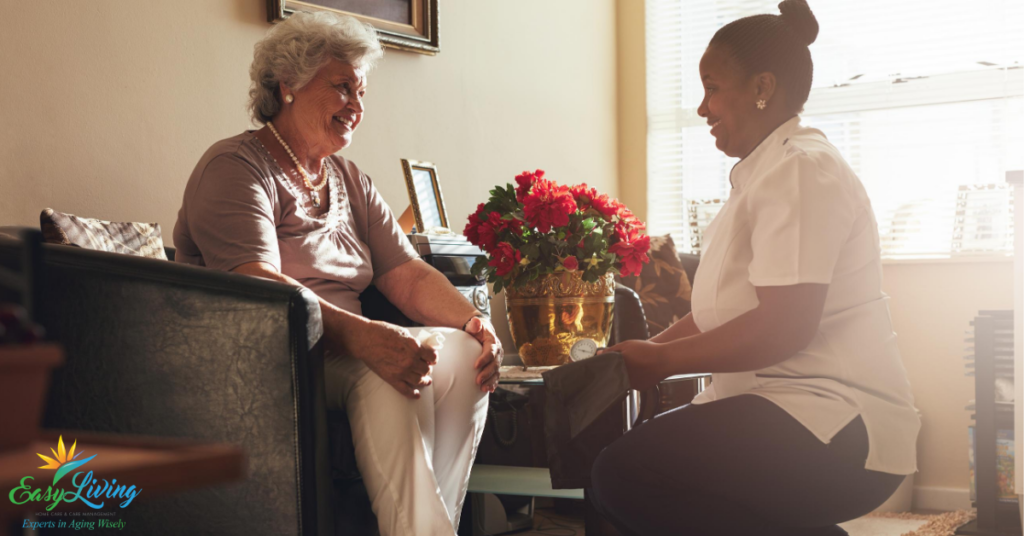Health Care Challenges, Home Care Solutions
The top 5% of patients drive 50% of healthcare costs in the U.S.
And, while the U.S. spends more per capita than other developed countries on health care, our outcomes are generally not better. The reasons for those cost differences are complex, but clearly there is disparity on whom the dollars are being spent. And, the causes of those costs are largely preventable and manageable.
Our system has not addressed chronic care effectively.
Our healthcare system focuses a lot on the most expensive, complex, acute care. We can triage and treat car accident or gunshot victims expertly. Our hospitals and treatment centers offer advanced diagnostics and treatments for acute disease. However, we do not focus significant resources on prevention and long-term needs for chronic conditions. Beyond the costs, this translates into poor quality of life for such patients in many cases. There are a lot of reasons for this, but we’ll focus on one of the key solutions.
Home Care Solution: Chronic Care Support
For those living with chronic conditions (or multiple conditions), 90% of their “health care” takes place outside of a hospital or doctor’s office. They need to manage their condition at home with medications, nutrition, lifestyle support and monitoring. Yet, we know this is where things break down. Home care offers evidence-based solutions, including:
- Medication management helps prevent medication errors (made by ½ of seniors, resulting in hospitalizations, nursing home admissions, and even death) and ensures clients take medications as directed. Caregivers also help spot side effects or problems by being another set of eyes and ears in the home.
- Nutrition: Eating right positively affects health and is absolutely essential to many conditions, like diabetes, high blood pressure, and cardiovascular problems. Home care may include meal planning, shopping, preparation, and even mealtime companionship. All of this helps the patient stay on track with the diet that’s best for them.
- Monitoring and Prevention: A doctor might see a patient once/quarter or less. When a patient goes to the hospital, the medical staff has little insight into the person’s background or lifestyle. And, they have little control over what happens when the person leaves the hospital. Caregivers can provide this missing link. They can help patients monitor their condition and spot issues. Additionally, personal care services and household support ensures a healthy environment…where the patient is most of the time.
- Care coordination bridges the gaps for consistency and communication between providers and in different settings.
Functional limitations triple healthcare costs.
$740 billion/year of healthcare costs are due to functional limitations. When someone has limited mobility or difficulties with self-care, they are more likely to experience health crises. Direct and indirect costs from falls alone rack up over $19 billion. And, our ERs are full of people suffering from these mostly preventable crises.
Functional Assistance in the Home
A home care plan addresses the person’s functional limitations with ADL and IADL support. A care manager can evaluate the home environment for safety hazards, make recommendations, and create a tailored plan for health at home.
Get a free Home Safety Checklist
Almost every condition a doctor might be treating can be adversely affected by someone’s lack of mobility and problems completing activities of daily living. These limitations can lead to increasing weakness, poor hygiene, infections, dehydration and more. Home care thus has a dramatic effect on outcomes for these patients.
Hospital Admissions and Readmissions
Adults older than 65 years account for up to 20% of all emergency department (ED) visits and 36% of all hospitalizations despite representing only 13% of the U.S. population. One study found “inappropriate hospitalization” (when a condition could have been managed on an outpatient basis) accounted for 40% of nursing home to hospital admissions and similar rates likely affect seniors in all settings.
And, one in five elderly patients is readmitted to the hospital within one month of discharge from hospital. Additionally, studies indicate that these hospital readmissions are avoidable in up to 75% of cases.
Addressing the Gaps with Home Care and Care Management
Home care has been taking on a more prominent role in the discharge process as hospitals look to address these issues. We covered our innovative Transitions of Care programs and the importance of both follow up and non-medical support here.
With wider adoption of home care, particularly in support of the acute care offered through Medicare home health, we can change these poor outcomes. Some of the key areas home care tackles include:
- Medication management (a particular problem after hospital discharge when medications often get changed)
- Nutrition and hydration (dehydration and related infections are top causes of hospital admissions and preventable readmissions)
- Fall prevention
- Monitoring symptoms and key indicators
- Coordinating follow up care
- Care management and advocacy for appropriate interventions, which can play a significant role in reducing “inappropriate hospitalizations”
Adaptability in the Time of COVID-19
Being able to provide health care interventions and support in the safety of the home has become even more critical during the COVID-19 pandemic. First, just from the practical standpoint of not taxing our hospitals with preventable ER visits and admissions. Second, to reduce risk for vulnerable patients.
This home care transformation has been steadily happening over the last decade, but there’s been an even more dramatic shift this year. The pandemic has forced more innovative thinking with home-based solutions. Many families also moved loved ones home from care facilities with home care support during the pandemic. We always recommend carefully assessing the situation and being prepared. Our team can help if this is something you’re considering, at any time.
We also provide COVID-19 patient care at home for those who do not need to go to the hospital but need help as they fight the virus.
Ready to find out more?
Request a phone or video call meeting to discuss how home care can help with staying as healthy as possible.







